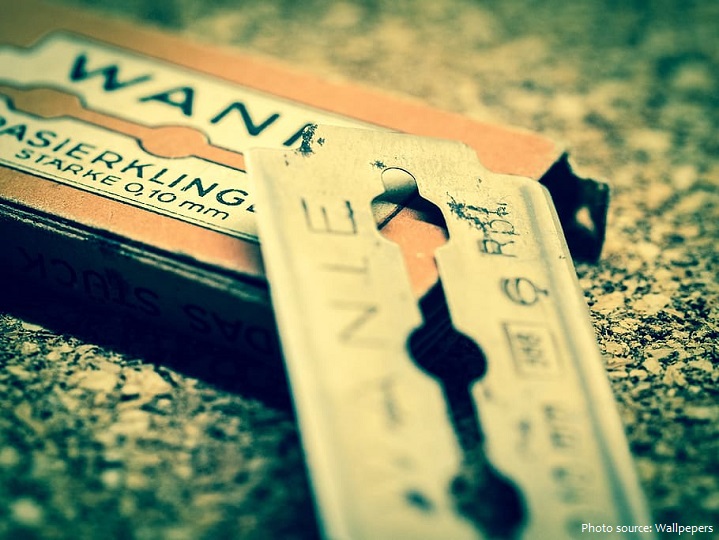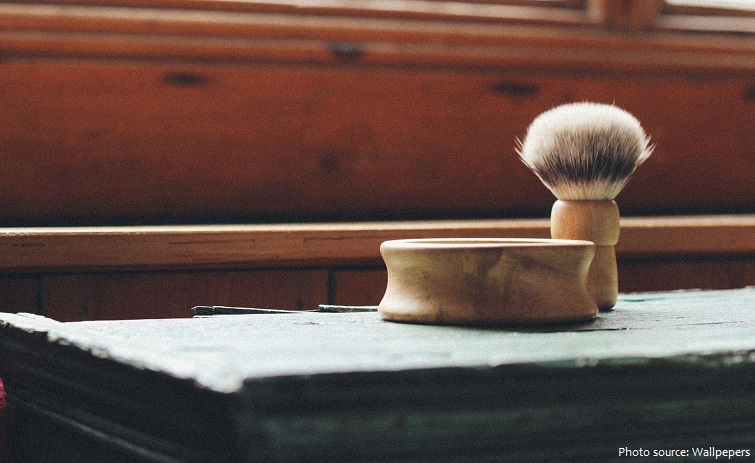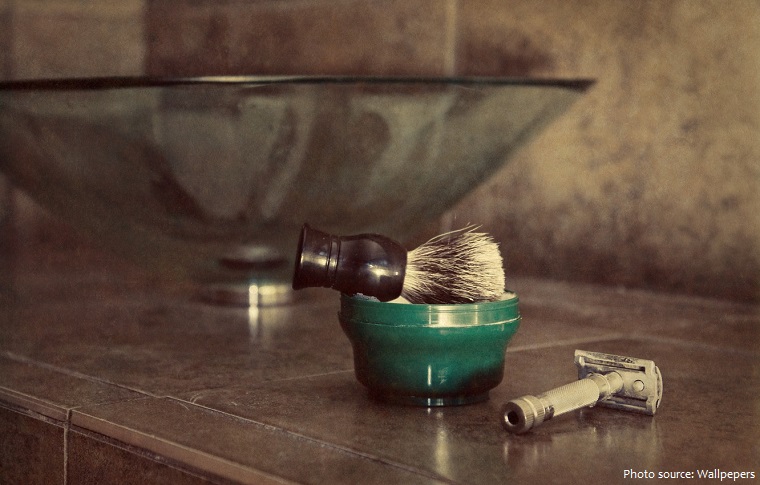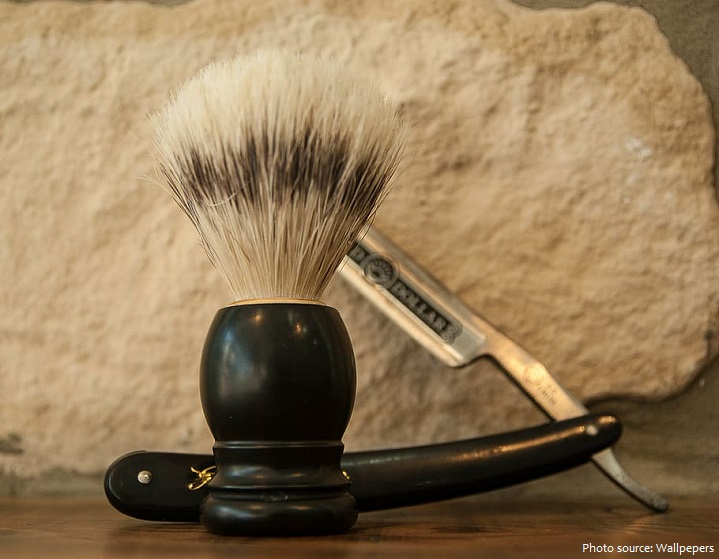
A razor is a bladed tool primarily used in the removal of body hair through the act of shaving.
Men have been shaving their facial hair pretty much since they first walked upright.
In prehistoric times clam shells, shark teeth, and flint were sharpened and used to shave with. Drawings of such blades were found in prehistoric caves. Some tribes still use blades made of flint to this day.
Razors have been identified from many Bronze Age cultures. These were made of bronze or obsidian and were generally oval-shaped, with a small tang protruding from one of the short ends.
Excavations in Egypt have unearthed solid gold and copper razors in tombs dating back to the 4th millennium BC.

The Roman historian Livy reported that the razor was introduced in ancient Rome in the 6th century BC. by the legendary king Lucius Tarquinius Priscus. Priscus was ahead of his time because razors did not come to general use until a century later.
The Ancient Greeks shaved to avoid looking like barbarians. Alexander the Great believed that bearded faces presented a tactical disadvantage in combat, as opponents could grab ahold of the hair. Whatever the reason why, the advent of the original razor can be dated back to prehistoric times, but it wasn’t until much later, in the 18th century in Sheffield, England, that the razor’s history as we know it today really began.
The first steel-edged cutthroat razors were manufactured in Sheffield in 1680. By the late 1680s, early 1690s, razors with silver-covered handles along with other Sheffield-made products known as “Sheffield wares” were being exported to ports in the Gulf of Finland, approximately 1200 miles (1931km) from Sheffield.
Benjamin Huntsman produced the first superior hard steel grade, through a special crucible process, suitable for use as blade material in 1740, though it was first rejected in England.

Protective devices for razors have existed since at least the 1700s: a circa 1762 invention by French cutler Jean-Jacques Perret added a protective guard to a regular straight razor. The first known occurrence of the term “safety razor” is found in a patent from 1880 for a razor in the basic contemporary configuration with a handle in which a removable blade is placed (although this form predated the patent).
The first modern straight razor complete with decorated handles and hollow ground blades was constructed in Sheffield, in England, the center of the cutlery industry, in the 18th and 19th centuries.
The term “safety razor” was first used in 1880 and described a basic razor with a handle attached to a head where a removable blade may be placed. The edge was then protected by a comb patterned on the head to protect the skin. In the more modern-day produced safety razors, the comb is now more commonly replaced by a safety bar. There are two types of safety razors, single-edged and double-edged. The single-edged razor is essentially a 4-centimetre (1.6 in) long segment of a straight razor. The double-edged safety razor is a razor with a slant bar that can be used on both sides, with two open edges. The blade on the double-edged safety razor is slightly curved to allow for a smoother and cleaner shave.

Patent No. 775,134 was granted to King C. Gillette for a “safety razor” on November 15, 1904. Gillette was born in Fond du Lac, Wisconsin in 1855 and became a traveling salesman to support himself after his family’s home was destroyed in the Chicago Fire of 1871. His work led him to William Painter, the inventor of the disposable Crown Cork bottle cap. Painter told Gillette that a successful invention was one that was purchased over and over again by satisfied customers. Gillette took this advice to heart.
In 1960, stainless steel blades which could be used more than once became available, reducing the cost of safety-razor shaving. The first such blades were made by the Wilkinson firm, famous maker of ceremonial swords, in Sheffield. Soon Gillette, Schick, and other manufacturers were making stainless-steel blades.
In 1971, Gillette continued to lead the pack in razor innovation by inventing cartridge razors. The first model was called the Trac II, a two-blade cartridge clip that hooked onto a more permanent razor handle. Cartridge razors are the most common kind of razor in use today. The benefit is the ability to get a close and safe shave at the same time with razor heads that can be replaced at relatively low expense.

In 1975, the French company Bic, which had pioneered developing a disposable pen and lighter, came up with what appeared to be a better idea: an inexpensive throwaway razor.
Today’s manufacturers are constantly developing razors with improved edges, smoother coatings together with a wide range of creams, soaps gels and brushes and other products to ensure that the shavers of today have never had it so good. The rest is History!
Today men are going back to the traditional safety razor with a single, flat sharp blade, somtimes the new ways simply cannot match the traditional ways. Long live the safety razor!